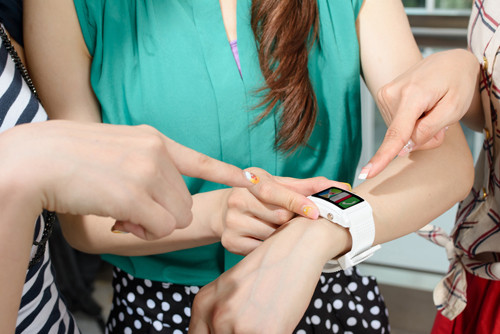Cisco’s recent mobile forecast made for stunning reading – its bold claim suggests there will be half a billion wearable devices in use around the world within four years, which ultimately will result in an 18 fold growth in mobile traffic. If the prediction is correct, all the hype surrounding wearables will become a reality in the very near future.
We can expect a familiar chain of events in the run up to this. Remember the tablet revolution? The speed at which smartphone obsessions in the West shifted to a consumer need for both mobile and tablet devices was rapid. But shortly before this happened, I can easily remember a short lived indifference towards the coming of the iPad – people outside our industry would say to me “Why do I need one of those? It’s just a bigger version of my phone”. How times change and consumer views alter. The very people who told me this, bar a few technophobe exceptions, now own an iPad – hardly surprising given 21.4 million of the Apple tablets were shipped last quarter.
The same course of proceedings is likely about to take place with wearables. Most of the general public may well be currently indifferent – or indeed blissfully ignorant – towards the plethora of devices launching. But as per Cisco’s forecast, we can expect wearables to be a ubiquitous piece of technology in people’s lives by the turn of the decade.
But to what extent are the major tech players truly readying themselves for a global wearable revolution. While Western excitement surrounding their growth remains substantial, what fanfare can we expect in growth markets?
For wearable devices in these regions to become widely used, the main consideration will be around users, and how easily they can access and engage with the device’s content. Principally, lessons needs to be learnt from when major tech companies attempted to mirror models to grow smartphone adoption in high growth markets. These models may well have worked in Western countries, but they failed to bear in mind fundamental differences in how consumers want to access content in other parts of the world.
Even if consumers in these parts of the world do put their hands on a wearable device, once they’ve reached the App Store rich with thousands of applications, they need banking facilities to access the content. This is a big stumbling block given the low penetration of financial services (credit and debit cards) in regions such as sub-Saharan Africa. Data from the Worldbank shows that the US has a penetration of 72%, whereas Nigeria has 19% and Ghana only 11%. In plainer terms, people that don’t have credit or debit cards won’t be readily able to access content through the ‘App Store’ model that has become so prevalent in the West.
For this reason, the wearable revolution in growth potential markets may not rely on the release of the Apple Watch in March this year. In fact it has already started to take shape in China following Xiaomi launching its $13 Mi band. The device has been an unmitigated success for the company, selling over 1 million units in the country alone in its first 4 months on sale.
An opportunity lies with manufacturers to work with mobile network operators to open the door to a new world of content via wearables. Our data shows that mobile network operators are more trusted than third parties in developing regions, and often have existing post or prepaid agreements in place already with consumers. Bearing this in mind, they are perhaps best placed to offer content and services which do not require credit or debit cards. Only time will tell whether this will prove the answer, either way the tech industry needs to explore how wearables don’t just take off in the West, but around the world.






